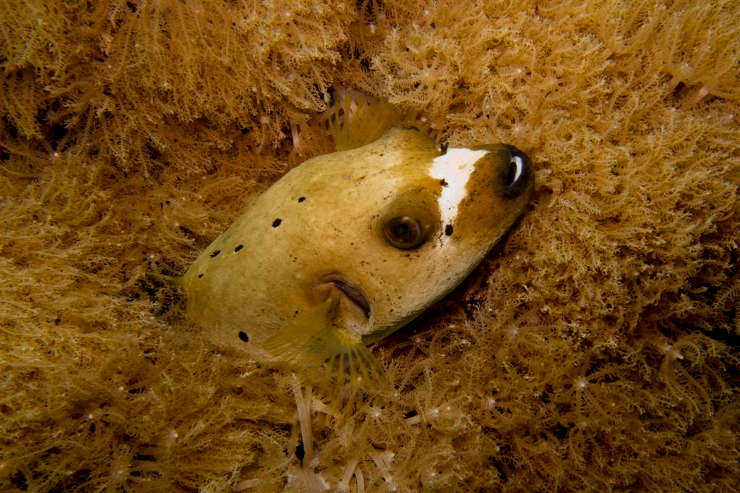First of all, before we get started it is highly recommended that pufferfish be kept in species only environments, meaning only having pufferfish in the aquarium.
There are a few reasons for this. Freshwater and brackish pufferfish can be quite aggressive, nipping at almost anything that comes too close.
Additionally, they struggle to compete for food. Just by observing them, you can see they aren’t built for speed, making it hard to snatch meals before other fish—unless you overfeed the entire tank.
(Source)
Finally, pufferfish are fragile and not beginner-friendly. They stress easily, and their health can decline rapidly from minor tank changes or fast-moving tankmates. Despite this, some hobbyists ignore advice and try keeping them in community tanks anyway.
Over the years, I’ve curated a list of the most compatible tankmates to minimize issues. This method evolved due to the pufferfish’s popularity.
Step-by-Step Setup Guide
First, start with an empty tank. Decorate it with plenty of hiding spots and open space, but remember: brackish tanks harm most plants. Next, cycle the tank fully.
Pro Tip: To reduce food competition, add ramshorn or pond snails early. Let them breed into a self-sustaining colony—this becomes the puffer’s primary diet.
Before adding puffers, introduce their future tankmates first. This ensures they acclimate to the water gradually. For brackish setups, add salt slowly over weeks (I use 1 tbsp per 10 liters). Only then add the puffers.
Choosing Tankmates: Key Questions
Ask yourself:
- Do you want peaceful coexistence?
- Alternatively, are you okay with cheap fish that might become occasional snacks?
Best Pufferfish Tankmates
1. Bottom-Dwelling Fish
These are ideal because they avoid puffer aggression by staying in different tank zones. Plus, they’re hardy enough to tolerate salt.
- Bumble Bee Goby (Brachygobius doriae)
- Size: Up to 1.5 inches
- Why? Naturally brackish, no lengthy acclimation needed. They thrive in groups in the lower tank regions.
- Clown Pleco (Panaqolus maccus)
- Size: Up to 5 inches
- Why? Though not brackish, they adapt well with slow salt introduction.
- Corydoras (Corydoras sp.)
- Size: Up to 4 inches
- Why? Extremely hardy. I’ve successfully kept them with brackish puffers.
2. Snails (Essential!)
Add these first to establish a sustainable food source. Most fish ignore snails, making them perfect for puffers.
- Pond Snails (Lymnaeidae sp.)
- Size: Up to 1 inch
- Why? Reproduce rapidly, creating a constant puffer buffet.
- Ramshorn Snails (Planorbis rubrum)
- Size: Up to 1 inch
- Why? Another fast breeder. Often considered pests, but ideal here.
3. Peaceful Community Fish
These aren’t perfect matches, but if managed well, they’ll survive—or become cheap replacements if eaten.
- Mollies (Poecilia sp.)
- Size: Up to 4.5 inches
- Why? Peaceful in groups of 5+. They adapt from freshwater to full marine.
- Neon Tetras (Paracheirodon innesi)
- Size: Up to 2 inches
- Why? Fast, cheap, and easily outmaneuver puffers.
- Harlequin Rasboras (Trigonostigma heteromorpha)
- Size: Up to 2 inches
- Why? Hardy, peaceful, and tolerate brackish conditions.

